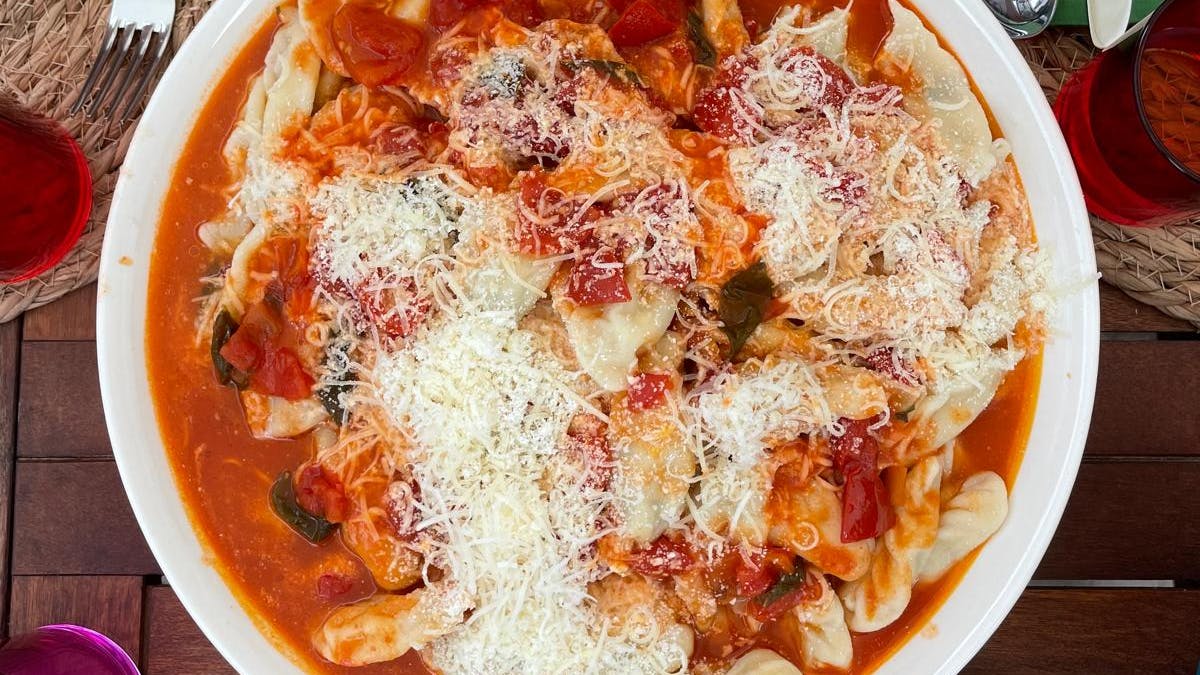

They are one of the most iconic dishes of Sardinia, and their unique shape, reminiscent of a wheat ear, makes them instantly recognizable: we’re talking about Culurgiones, ravioli filled with a soft potato-based filling.
Culurgiones are an ancient type of pasta, and it’s virtually impossible to trace their exact origin. However, the first historical mention of these particular ravioli dates back to an 1811 document that refers to "Colurgiones con casu" (Culurgiones with cheese).
This simple dish, rooted in Sardinian farming traditions, originates from Ogliastra, the central-eastern area of the island nestled between the Gennargentu mountains and the crystal-clear waters of the Tyrrhenian Sea. But don’t worry if you’re elsewhere: these ravioli have now become a widespread delicacy across Sardinia, with each village offering its own unique twist on the filling for this traditional dish.
Let's learn how to make them with the recipe from our Cesarino Andrea from Quartu Sant’Elena.


Sardinian Culurgiones
The typical ravioli with a soft filling of potatoes and cheese
Ingredients
- Potatoes: 900 g
- Flour (type 00): 350 g
- Semolina flour: 250 g
- Aged pecorino: 150 g
- Fresh pecorino: 150 g
- Water: 300 g
- Mint: 20 leaves
- Garlic (optional): 2 cloves
- Oil: 1 tablespoon
- Peeled tomatoes (for the sauce): 900 g
Method
- Mix the 00 flour, semolina flour, a tablespoon of oil, and a pinch of salt, gradually incorporating the water.
- Once the dough is ready, shape it into a ball, wrap it in plastic wrap, and let it rest for at least 30 minutes.
- Boil the potatoes, peel, and mash them. Add the chopped mint leaves, the grated aged and fresh pecorino cheeses, and optionally, the garlic (previously minced and lightly sautéed). Adjust the salt and pepper to taste.
- Roll out the dough into a thin sheet about 1 mm thick and use a pastry cutter to create discs approximately 7 cm in diameter.
- Place a spoonful of filling on each disc, then seal the edges by pinching them together. Start sealing from one side and work your way to the other, forming the classic wheat-ear shape.
- Cook the Culurgiones in salted boiling water until they float to the surface.
- For the sauce, sauté a clove of garlic in five tablespoons of oil until golden.
- Add the peeled tomatoes and cook for about 15 minutes, then remove the garlic.
- Serve the Culurgiones with the tomato sauce, basil if desired, and grated pecorino cheese.
Note: Cooking time varies from 5 to 15 minutes depending on the thickness of the dough.

Some curiosities:
Did you know that until the 1960s, Culurgiones were eaten in some towns only on November 2nd, the day of remembrance for the deceased? It was believed that these ravioli were a talisman against the evil eye. In other areas, they were typically served during the propitiatory celebration for the wheat harvest, as their wheat-ear shape was directly tied to the occasion.
In 2015, Culurgiones were recognized as a PGI product, making them the third type of pasta to receive this prestigious designation.